Figures & data
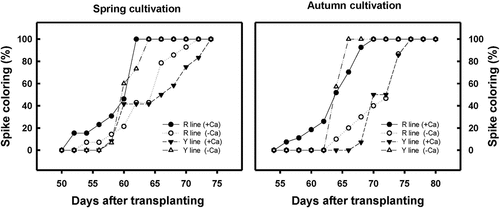
Figure 1. The variations in the environmental temperature as recorded throughout the experiment. (A) the average environmental temperature recorded during the spring cultivation; (B) the average environmental temperature recorded during the autumn cultivation.
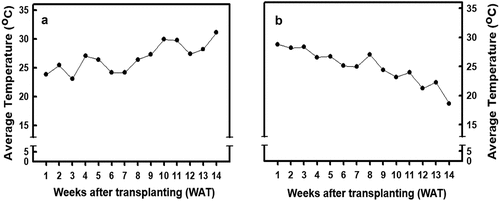
Figure 2. The effect of calcium carbonate on plant height of different djulis lines. Plant height of the RP line of djulis cultivated in (A) spring and (C) autumn; and the OY line of djulis cultivated in (B) spring and (D) autumn. RP line – red spike djulis; OY line – yellow spike djulis; Bars represent means ± SE; * represent significantly different values between – Ca+2 and + Ca+2 at P < 0.05.
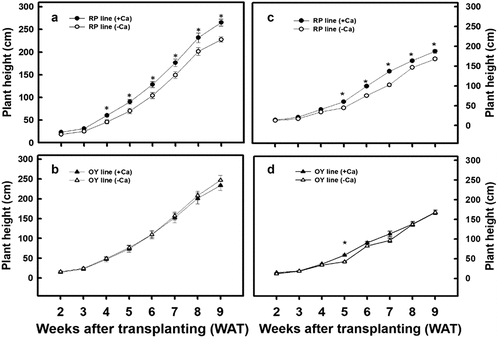
Figure 3. The effect of calcium carbonate on stem diameter of different djulis lines. Stem diameter of the RP line of djulis cultivated in (A) spring and (C) autumn; and the OY line of djulis cultivated in (B) spring and (D) autumn. RP line – red spike djulis; OY line – yellow spike djulis; Bars represent means ± SE; * represent significantly different values between – Ca+2 and + Ca+2 at P < 0.05.
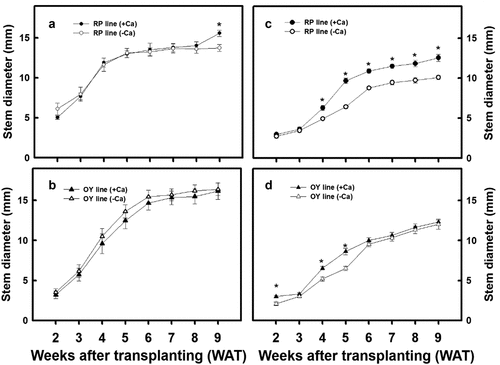
Figure 4. The effect of calcium carbonate on the internode number of different djulis lines. Internode number of the RP line of djulis cultivated in (A) spring and (C) autumn; and the OY line of djulis cultivated in (B) spring and (D) autumn. RP line – red spike djulis; OY line – yellow spike djulis; Bars represent means ± SE; * represent significantly different values between – Ca+2 and + Ca+2 at P < 0.05.
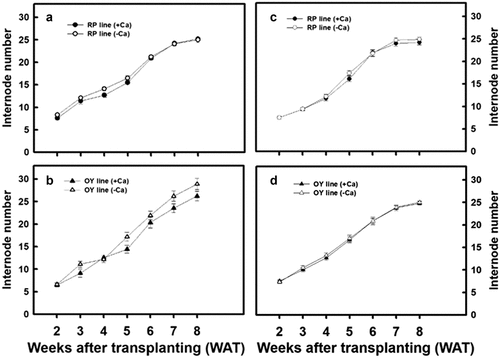
Table 1. Effect of calcium carbonate treatment on hydrogen peroxide (H2O2) activity in RP and OY djulis lines cultivated in spring and autumn.
Table 2. Effect of calcium carbonate treatment on antioxidant activity in RP and OY djulis lines cultivated in spring and autumn.
Figure 5. The effect of calcium carbonate on Ca+ and K+ content in the stem of different djulis lines. (A) Ca+ content and (B) K+ content in the stem of the RP and OY djulis lines cultivated in spring. (C) Ca+ content and (D) K+ content in the stem of the RP and OY djulis lines grown in autumn. RP line – red spike djulis; OY line – yellow spike djulis; Bars represent means ± SE; Bars followed by the same letter are not significantly different at P < 0.05.
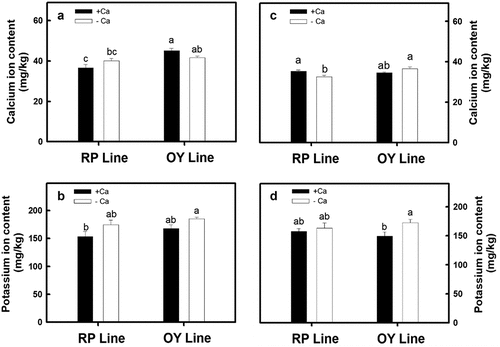
Figure 6. The effect of calcium carbonate on Ca+ and K+ content in the grains of different djulis lines. (A) Ca+ content and (B) K+ content in grains of the RP and OY djulis lines cultivated in spring. (C) Ca+ content and (D) K+ content in the grains of the RP and OY djulis lines grown in autumn. RP line – red spike djulis; OY line – yellow spike djulis; Bars represent means ± SE; Bars followed by the same letter are not significantly different at P < 0.05.
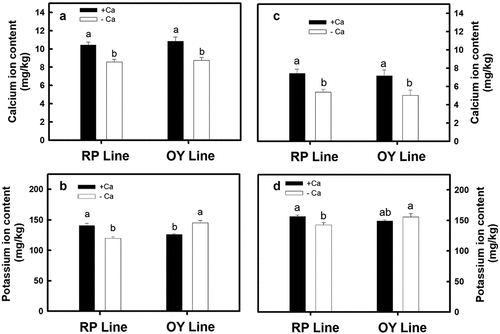
Figure 7. The effect of calcium carbonate treatment on the duration of spike color change in different djulis lines cultivated in (A) spring and (B) autumn. RP line – red spike djulis; OY line – yellow spike djulis.
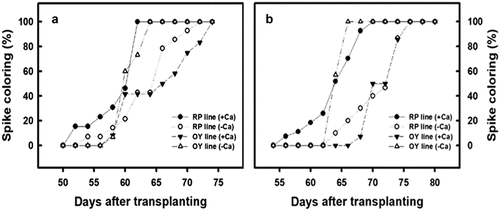
Table 3. The effect of calcium carbonate on yield components of different djulis lines.